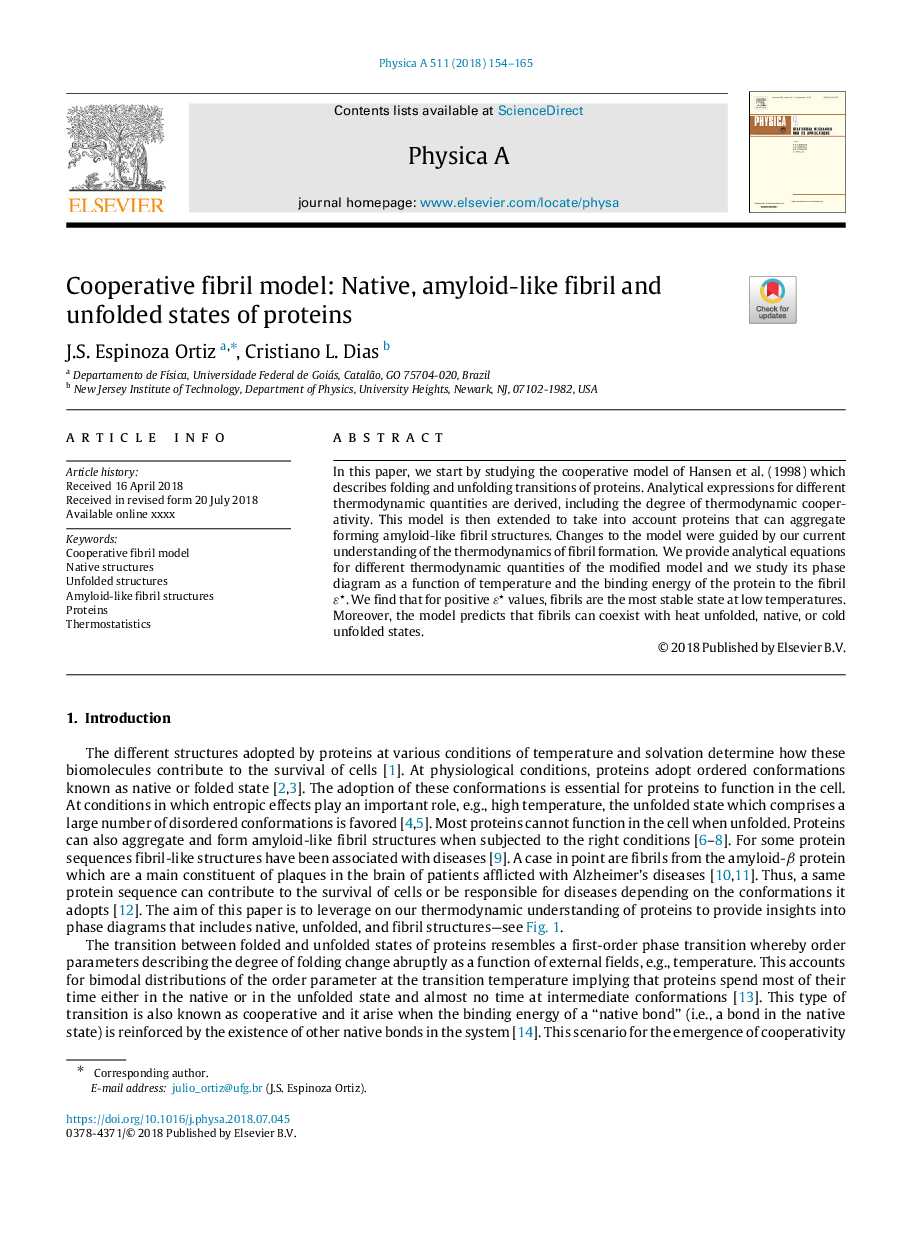| Article ID | Journal | Published Year | Pages | File Type |
|---|---|---|---|---|
| 7374539 | Physica A: Statistical Mechanics and its Applications | 2018 | 12 Pages |
Abstract
In this paper, we start by studying the cooperative model of Hansen et al. (1998) which describes folding and unfolding transitions of proteins. Analytical expressions for different thermodynamic quantities are derived, including the degree of thermodynamic cooperativity. This model is then extended to take into account proteins that can aggregate forming amyloid-like fibril structures. Changes to the model were guided by our current understanding of the thermodynamics of fibril formation. We provide analytical equations for different thermodynamic quantities of the modified model and we study its phase diagram as a function of temperature and the binding energy of the protein to the fibril εâ. We find that for positive εâ values, fibrils are the most stable state at low temperatures. Moreover, the model predicts that fibrils can coexist with heat unfolded, native, or cold unfolded states.
Keywords
Related Topics
Physical Sciences and Engineering
Mathematics
Mathematical Physics
Authors
J.S. Espinoza Ortiz, Cristiano L. Dias,
